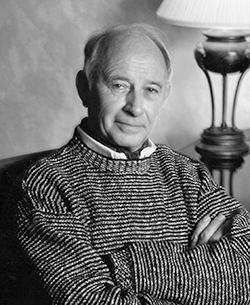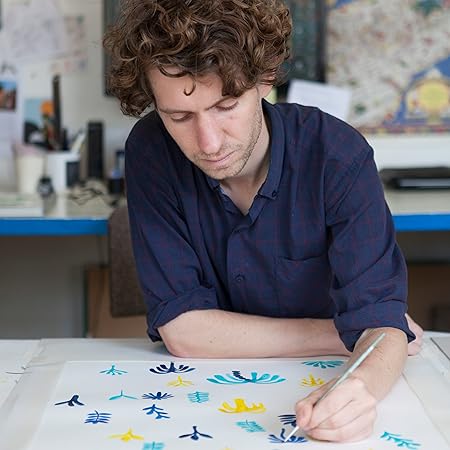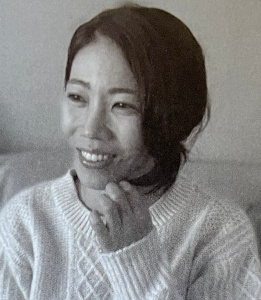
Brian Wildsmith (1930-2016) was an English artist and book illustrator. He earned a reputation as one of the most colourful and original children’s artists of his time. Along with Quentin Blake and John Burningham, he influenced a generation of illustrators and publishers of the 1960s, when the technical capabilities of colour reproduction in book printing improved dramatically.
He studied at the Slade School of Fine Art for three years. He taught music for a time at the Royal Military School of Music, but then gave it up to draw full-time. From 1955 to 1957 he taught at Selhurst Grammar School. During this time he began designing book jackets for the publisher John Murray and others, as well as illustrations for children’s books.
His first book ABC (The Wordless Alphabet) won the Kate Greenaway Medal in 1962. Subsequently, four more of the artist’s works were awarded second place in the same competition, including the book “How the Woodpecker Saved the Owl” (1971). Wildsmith’s books were twice nominated for the highest international award in modern children’s literature – the Hans Christian Andersen Gold Medal – in 1966 and 1968.
In total, he illustrated more than eighty children’s books.
In 1994, a museum of his work was opened in Japan, where more than 800 of his paintings are presented.
In 1971, Brian, his wife and four children emigrated to France, where he settled for the rest of his life. Despite the move, Brian remained an ardent fan of Yorkshire and was proud of his origins. He died in France in 2016.
Brian Wildsmith’s artistic style is easily recognizable: he boldly mixes different colours, creating a bright (sometimes collage-like) canvas, where the characters seem to be assembled from droplets of paint. The composition of each illustration is based on the play of colour and shape. And what an exciting play it turns out to be every time!
Probably, Brian Wildsmith’s books are the most convenient way to show what an “author’s picture book” is. If the artist composes the entire book himself, then, as a rule, he does not strive to create a complex narrative, but, on the contrary, simplifies and “clarifies” the plot whenever possible. But not at the expense of fascination – the intrigue, as a driving force, always remains!
Picture books give an opportunity for a marriage between painting and illustrating, and the challenge of designing each page is very stimulating. I believe that beautiful picture books of the right kind are vitally important in subconsciously forming a child’s visual appreciation, which will bear fruit later in life.
***
The art at school was a disaster. All we did was sit in a circle around cubes and triangles and draw them in different positions. It was during the War, so paper was scarce and it was difficult to get paints, but I used to spend my time drawing battle scenes between airplanes and warships.
***
Art is food for the soul and a picture book represents a child’s very first encounter with art, so I felt this was a way I could make a contribution to the world. A drop in the ocean maybe, but this work offered a chance to communicate to children the importance of such things as kindness, compassion, friendship, beauty.
Instagram | instagram.com/brianwildsmithofficial
Website | brianwildsmith.com
Amazon | Brian Wildsmith
Books

Blue Bird
The magic and enchantment of Maeterlinck’s famous play have been adapted by Brian Wildsmith in this illustrated tale of a little girl whose illness can only be cured by a magical blue bird. To find the bird, Mytyl and Tyltyl must journey through the Land of Memory to the Palace […]


